Some dogs are naturally eager to learn, making them a dream for first-time pet parents or those seeking a well-mannered companion. While intelligence certainly plays a role, trainability often comes down to a dog’s desire to please, ability to stay focused, and how well they respond to positive reinforcement. Breeds developed to work closely with humans tend to pick up commands quickly and thrive when given structure and purpose.
It’s also important to consider each breed’s personality and instinctive behavior. Some dogs were bred to solve problems independently, which may make them seem stubborn, while others were designed to follow direction and work cooperatively. Regardless of background, using reward-based training methods and tailoring lessons to your dog’s pace can yield amazing results, even with the most strong-willed pups.
If you’re looking to bring home a pup that’s quick to learn and eager to please, start with breeds known for their responsiveness. This list highlights some of the easiest dog breeds to train, saving you time, frustration, and chewed-up shoes.
Easiest Dog Breeds to Train
1. Golden Retriever
According to Britannica, the Golden Retriever is recognized for its friendly nature and strong desire to please, as well as its enthusiastic retrieving skills on both land and in water. Golden Retrievers are well-known for their eager-to-please attitude and quick learning ability, making them one of the easiest dog breeds to train.
Their intelligence, combined with a gentle demeanor and a strong desire to bond with humans, means they thrive in structured environments where training is consistent and positive. This is why they’re often chosen for roles such as guide dogs and therapy dogs.
Exercise
This energetic breed requires daily activity to maintain both mental and physical health. Golden Retrievers enjoy walks, fetch sessions, swimming, and even agility training. While they’re not built for intense endurance sports, they can be conditioned to participate in longer activities with proper care.
However, it’s important to ensure off-leash exercise occurs in secure, fenced-in areas to prevent unexpected dashes fueled by curiosity.
Fun Fact: Golden Retrievers rank consistently among the most popular dog breeds in the United States, thanks to their trainability, friendliness, and versatility.
2. Papillon
PetMD explains that “Papillon” means butterfly in French, which suits the breed perfectly due to its large ears adorned with long, delicate hairs that resemble butterfly wings. Despite their dainty frame, Papillons are intelligent and highly trainable, making them a top pick for owners who value obedience.
Their eager-to-please nature and spaniel roots give them an edge in activities that require quick thinking and responsiveness. These charming toy dogs not only excel in competitive obedience and agility but also thrive when mentally stimulated with new tricks and games.
Exercise
Don’t let their small size fool you, Papillons are energetic and need regular physical and mental outlets. Daily leash walks, interactive play sessions, and canine sports like obedience trials keep them at their happiest.
They also enjoy bonding through indoor games and structured activities. Since they can suffer from separation anxiety, especially when left alone too long, giving them enrichment toys or a canine companion can help ease stress.

Fun Fact: Named for their butterfly-like ears, Papillons are curious, quick learners who were bred as companion dogs but shine in obedience and agility competitions.
3. Border Collie
The AKC describes the Border Collie as an exceptionally intelligent and hardworking dog, so much so that it may be overwhelming for owners who lack the time, energy, or resources to keep it mentally and physically engaged. Often considered one of the smartest dog breeds in the world, the Border Collie stands out for its incredible trainability.
Bred for herding and designed for mental and physical work, these dogs pick up commands quickly and thrive on complex tasks. Their eager-to-learn attitude and responsiveness make them ideal for owners interested in teaching tricks, competing in dog sports, or maintaining structured routines.
Exercise
Mental and physical stimulation are essential for a Border Collie’s well-being. These agile pups enjoy weaving through makeshift obstacle courses, leaping over broomsticks, and crawling under tables, all of which you can easily set up at home.
Regular walks, training games, and canine sports like agility or herding trials help channel their boundless energy and reduce boredom-driven behaviors.
Fun Fact: Border Collies often shine in obedience and agility competitions and are especially responsive to training that begins early and continues consistently into adulthood.
4. Labrador Retriever

Labrador Retrievers are widely celebrated for their trainability, making them a favorite for first-time dog owners and professionals alike. Their friendly disposition and willingness to please make them quick learners, especially with commands like sit, stay, and come.
These characteristics are why Labs are often chosen for service work and search and rescue missions.
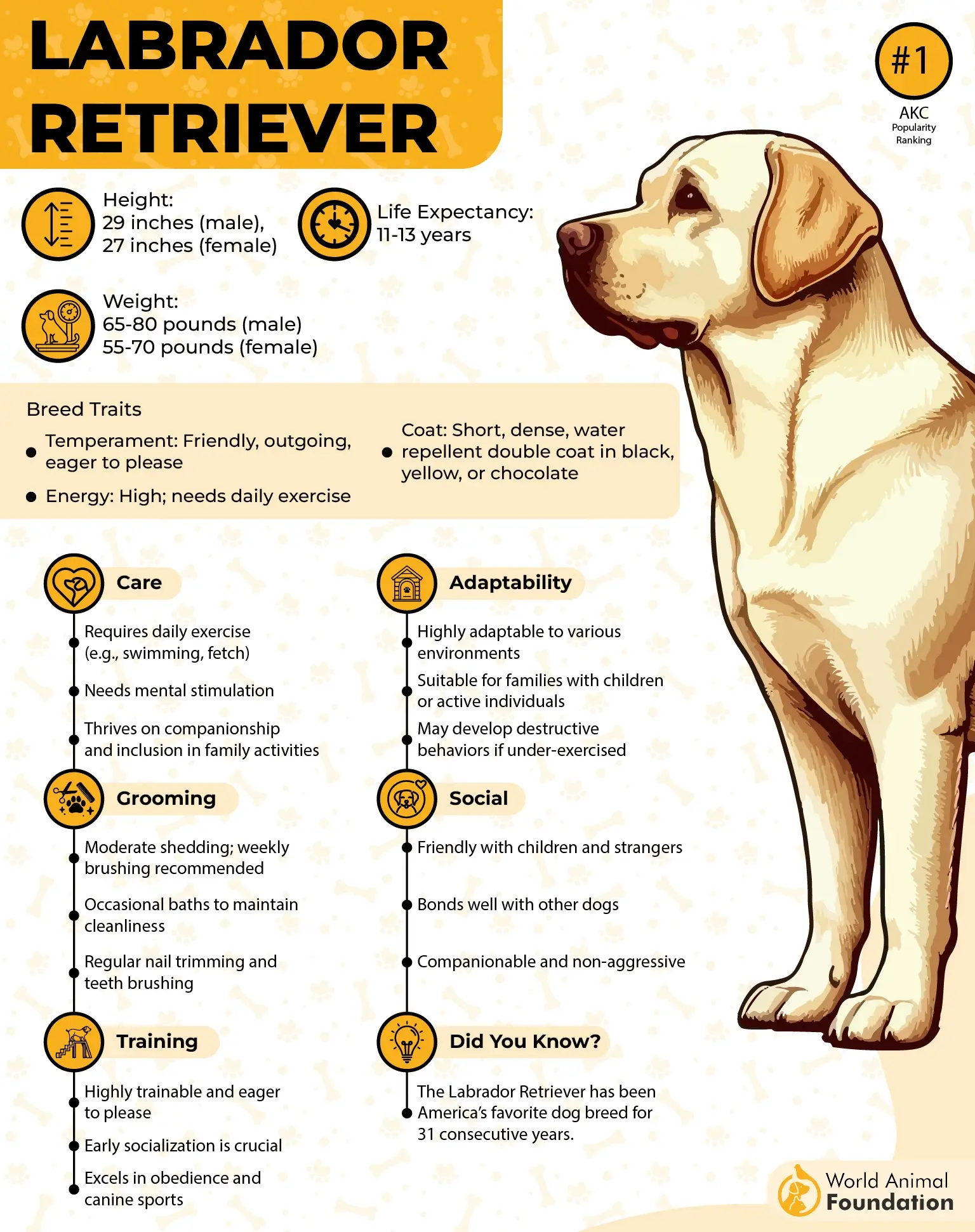
Exercise
Labs are energetic and athletic, so they require regular physical activity to stay fit and happy. Daily walks, games of fetch, swimming, and training sessions provide excellent outlets for their energy.
Without enough exercise, they may become bored and develop unwanted behaviors like chewing or excessive barking. Socializing them early with people and other pets helps round out their temperament and behavior.
Fun Fact: Thanks to their eager-to-please personality and gentle nature, Labrador Retrievers are not only one of the easiest dogs to train but also one of the most popular dog breeds in the U.S.
5. Rottweiler
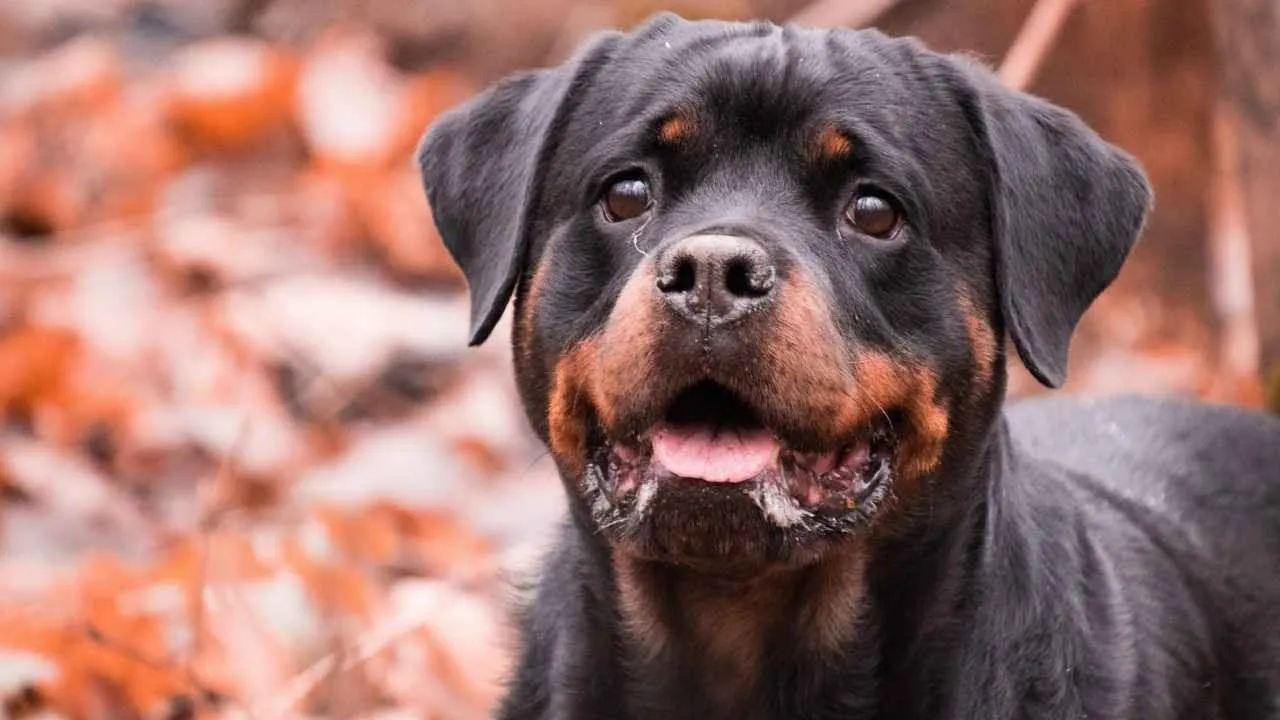
With intelligence, loyalty, and a desire to please, Rottweilers are among the easiest breeds to train when their strong instincts are channeled correctly. Originating from Roman drover dogs, this powerful German breed has excelled in roles like service tasks and family protection.
While they may look intimidating, Rottweilers can be calm, docile, and eager learners when training begins early and is reinforced consistently.
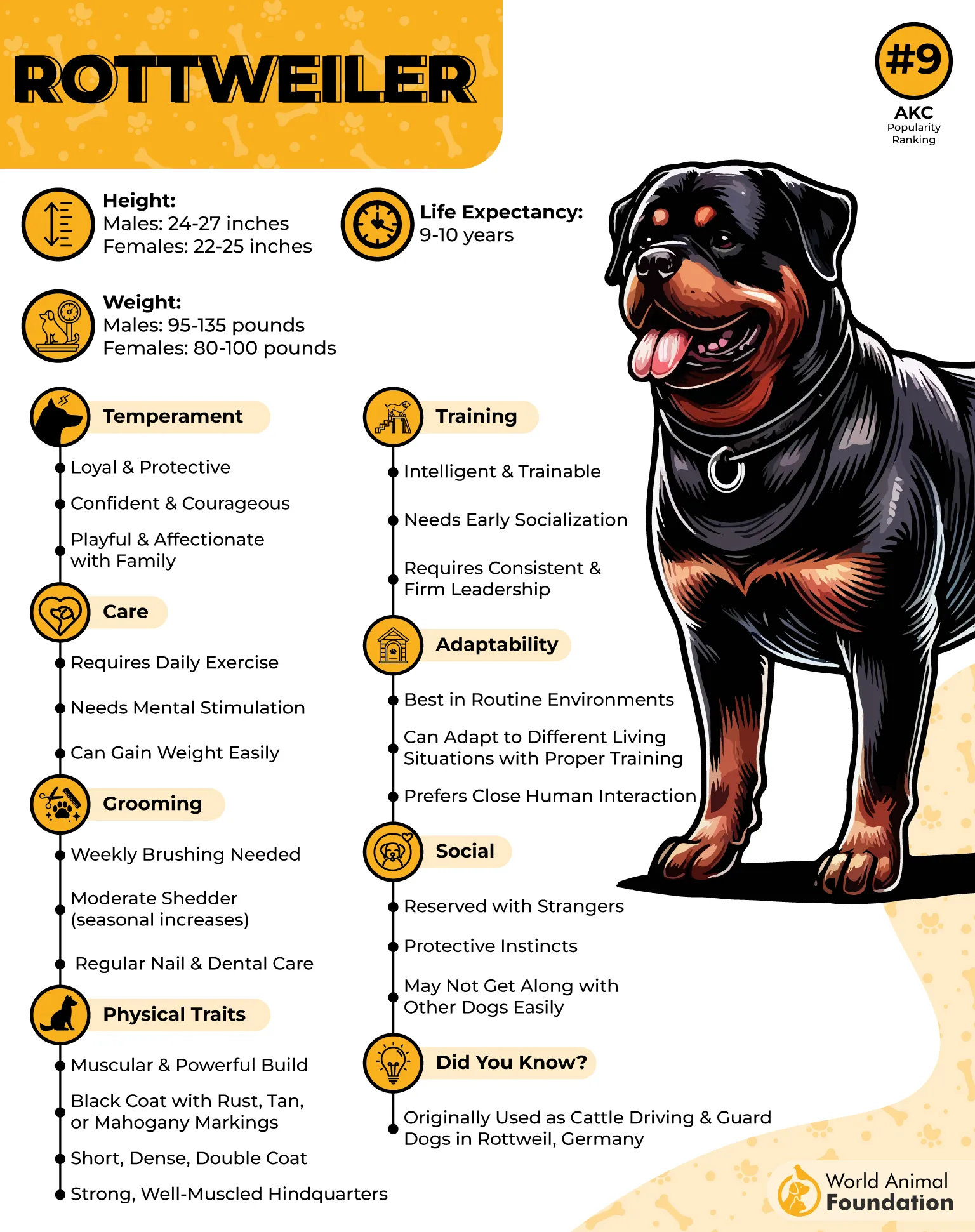
Exercise
Rottweilers need both physical activity and mental stimulation to stay balanced. Regular walks, obedience sessions, and canine sports like tracking or agility help meet their drive for structured tasks.
Their muscular build thrives on purposeful movement, and keeping them engaged prevents unwanted behaviors. A Rottweiler without a job or outlet may become restless or overly territorial, so daily exercise and interaction are vital.
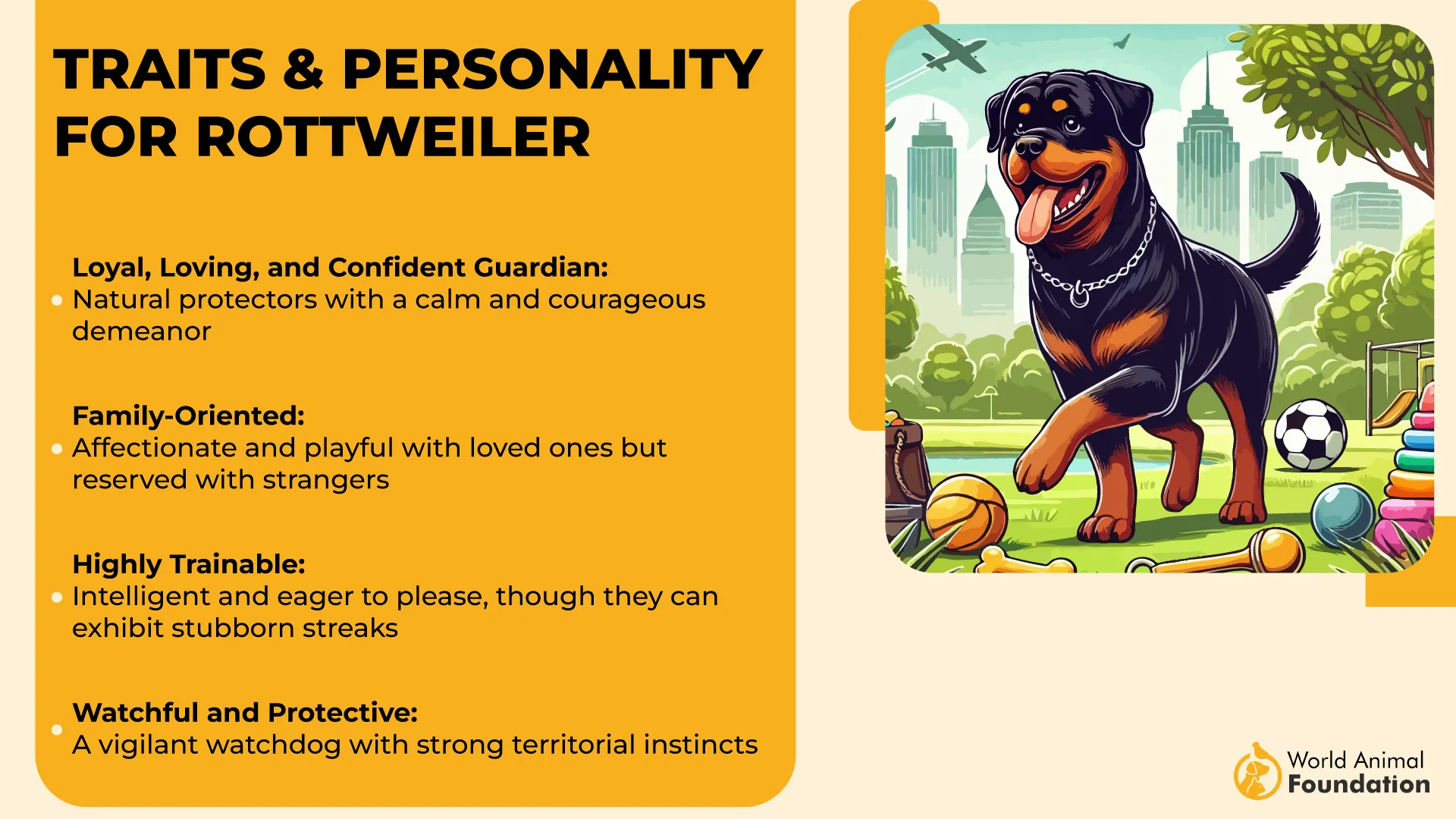
Fun Fact: Despite their size and guarding instincts, many Rotties are playful goofballs at home, and some will happily attempt to sit in your lap like a toy breed.
6. Australian Cattle Dog
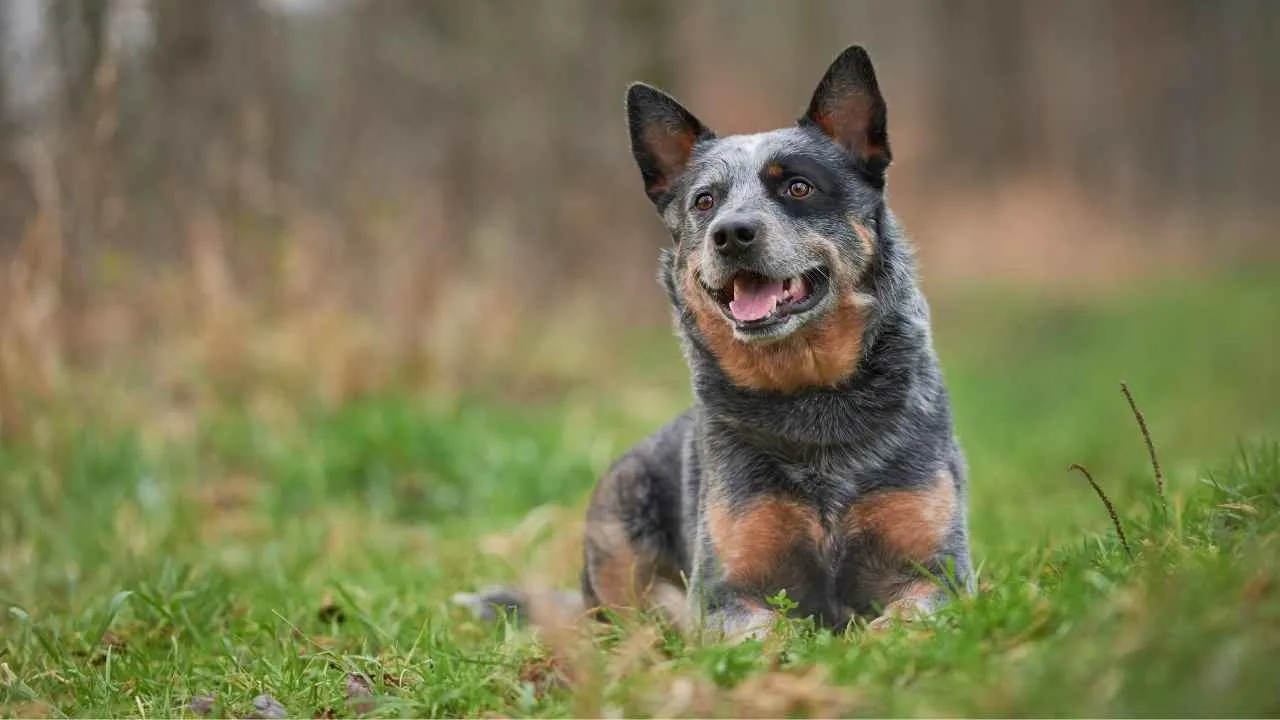
WebMD states that the Australian Cattle Dog originated in Australia during the 19th century and was developed specifically for herding cattle. Known for its endurance, strength, and resilience, this breed is well-suited for covering long distances across rough terrain while driving livestock.
With sharp instincts and high intelligence, the Australian Cattle Dog is one of the easiest breeds to train, especially for owners who thrive on active engagement. Bred to make quick decisions while herding livestock, this breed excels when given a task. Their loyalty and strong work ethic make them responsive to training routines that challenge their minds and bodies.
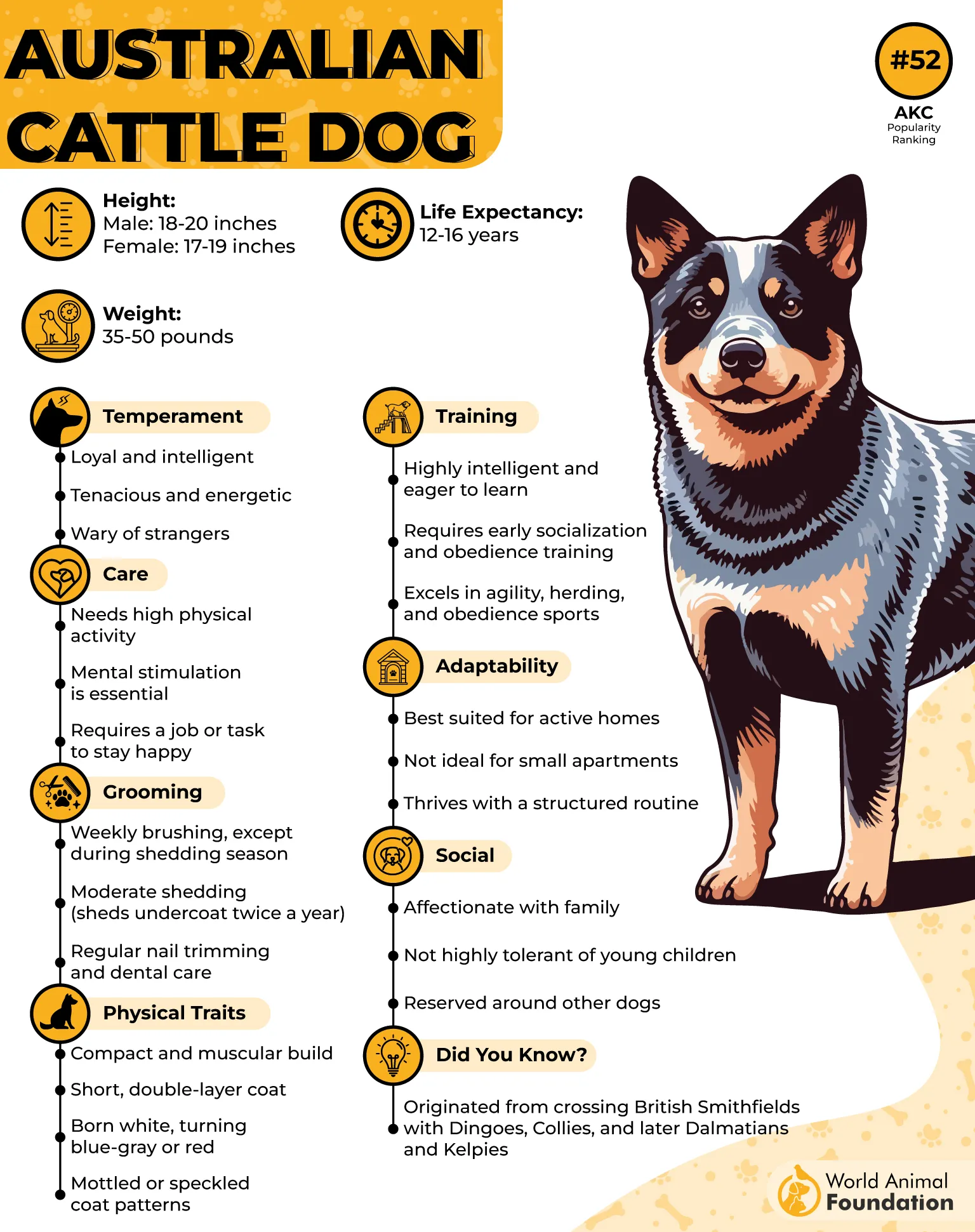
Exercise
These herding dogs are brimming with energy and require consistent physical activity to stay balanced. Long outdoor play sessions, herding drills, agility courses, or even advanced obedience games are perfect for keeping them engaged.
While they can live indoors, these dogs are happiest with space to roam and work to do. Without adequate stimulation, they may develop boredom-related behaviors like chewing or chasing.
Fun Fact: Known for protecting herders and their livestock in Australia, this breed was developed to guard people, horses, and property with confidence and quick judgment.
7. Border Terrier
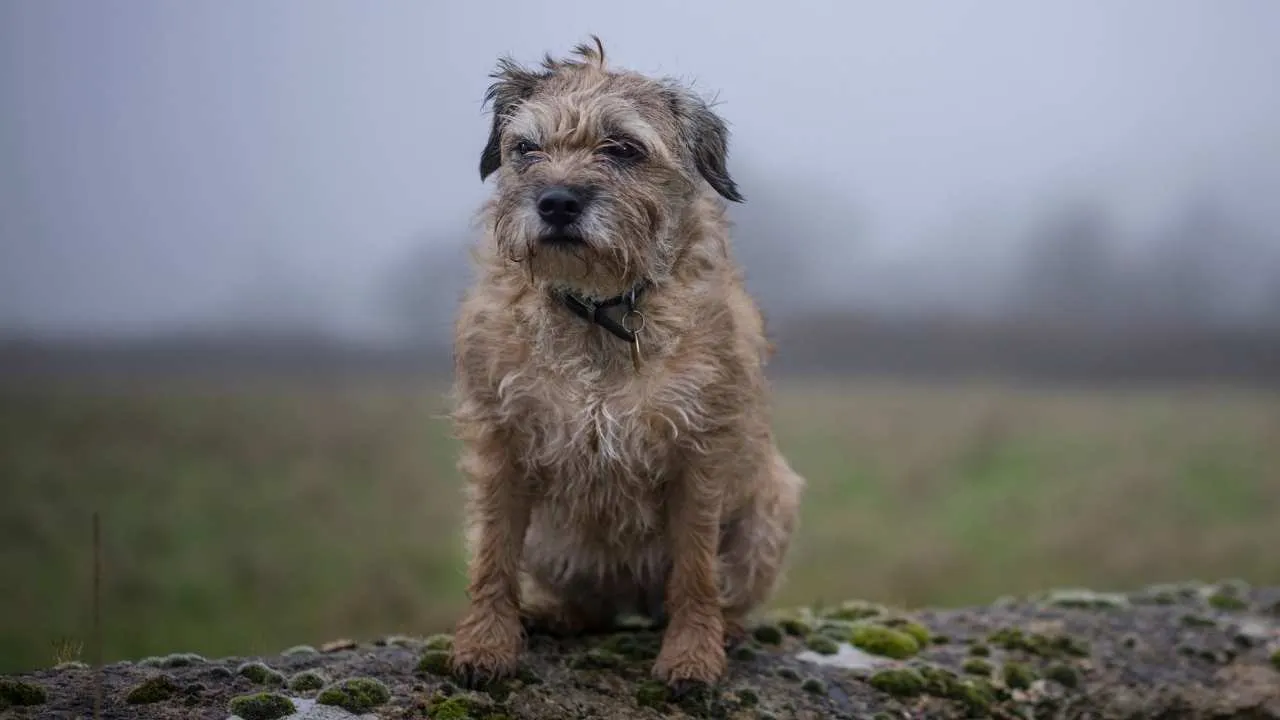
Border Terriers are energetic and smart little dogs with a strong drive to please once properly motivated. Bred originally to assist in fox control, they’re known for their courage, independence, and willingness to work.
While they can be a bit headstrong, consistent, positive reinforcement makes them responsive trainees, especially after they’ve burned off some energy.
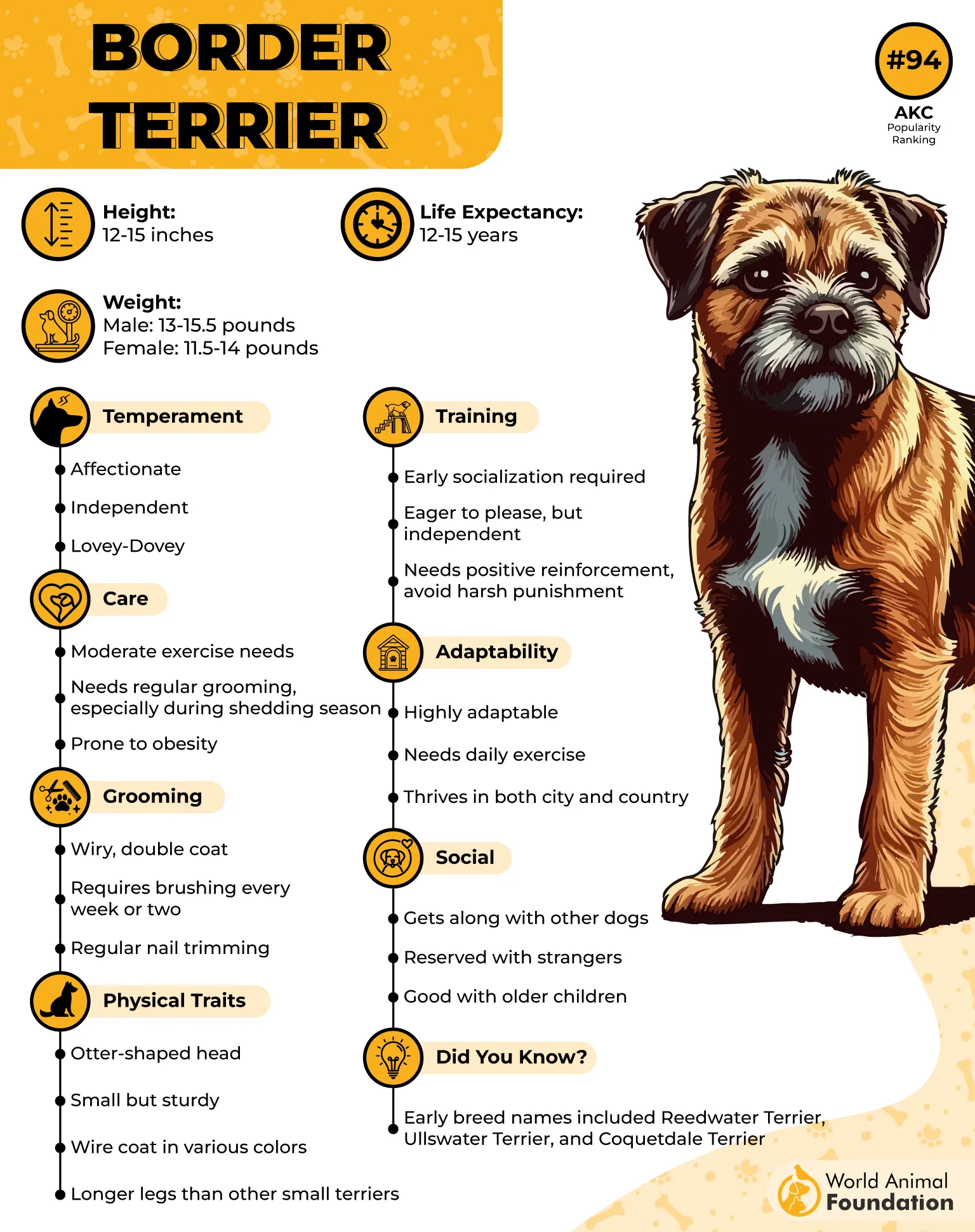
Exercise
These dogs thrive on activity and do best with plenty of physical and mental stimulation. Long walks, games of fetch, and digging zones in the yard will help curb their natural instincts in a healthy way.
They’re happiest when fully included in family life and are not suited to being kenneled or left alone for extended periods. A well-exercised Border Terrier is a well-behaved one, ready to focus during training sessions.
Fun Fact: Though fearless in the field, the breed standard also highlights Border Terriers as “affectionate, obedient, and easily trained”, a charming mix of tough and tender.
8. Doberman Pinscher
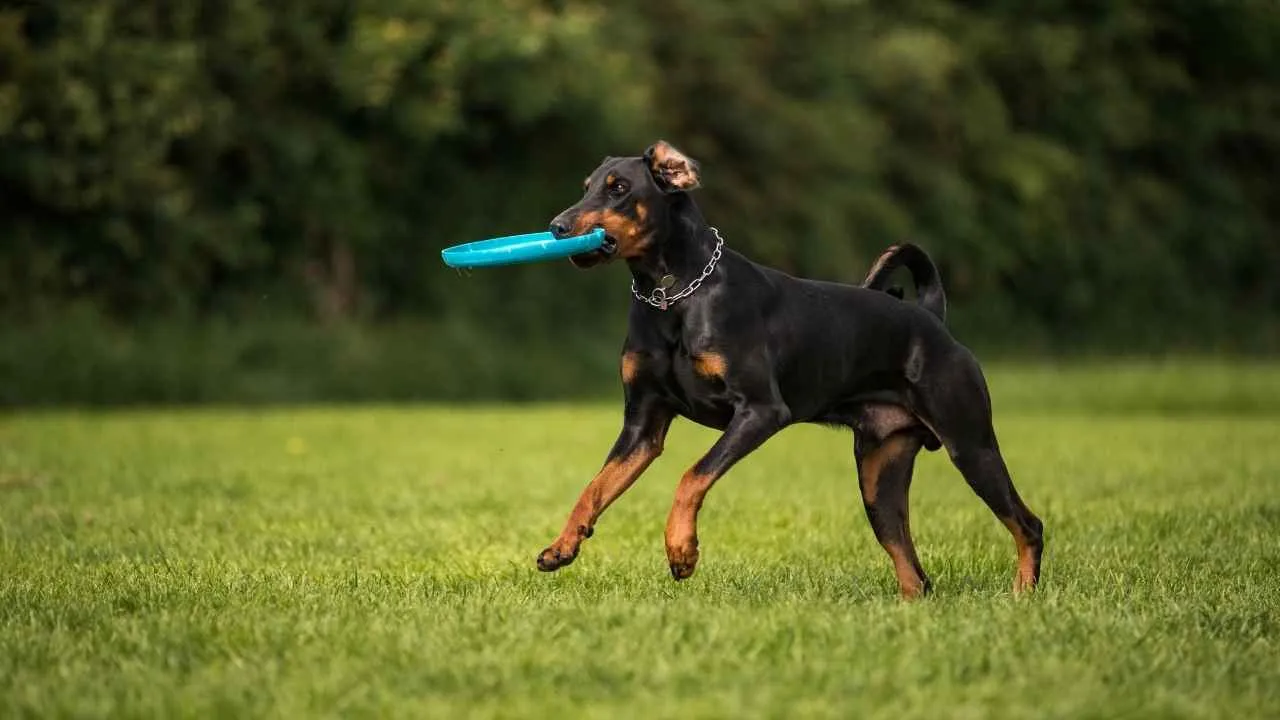
Doberman Pinschers are not only known for their sleek build and protective instincts but also for their exceptional trainability. These sharp-minded dogs are fast learners and thrive on structure, making them ideal for owners looking for a responsive and obedient companion. Their intelligence and strong work ethic make them naturals at mastering commands and complex tasks.
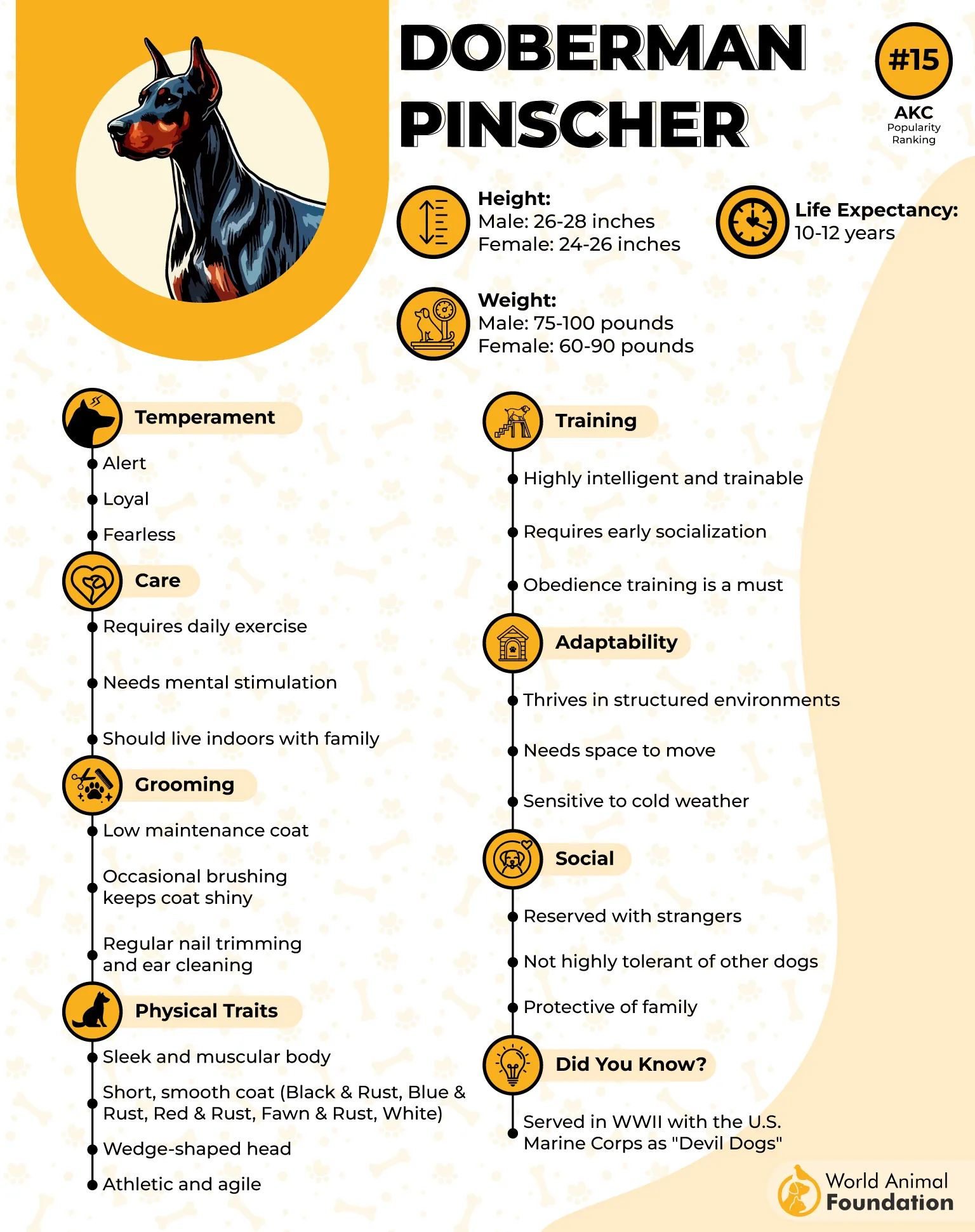
Exercise
To bring out the best in a Doberman, daily exercise is non-negotiable. They benefit from brisk walks, jogs, and mentally stimulating play like obedience games or agility challenges.
Dobies also enjoy training sessions that build impulse control, such as learning to wait patiently for a treat, which reinforces discipline while keeping them mentally engaged. Without enough physical and mental activity, they may become pushy or destructive.
Fun Fact: Despite their tough appearance, Dobermans are known to be goofy, affectionate companions who excel in both obedience and protection work thanks to their sharp intelligence and loyalty.
9. English Springer Spaniel

With their eager-to-please attitude and strong work ethic, English Springer Spaniels are among the most trainable breeds. Bred to flush and retrieve game, they are naturally responsive to commands and enjoy working closely with their people.
These dogs thrive on positive reinforcement and quickly grasp new cues, making them excellent partners in both obedience and family life.
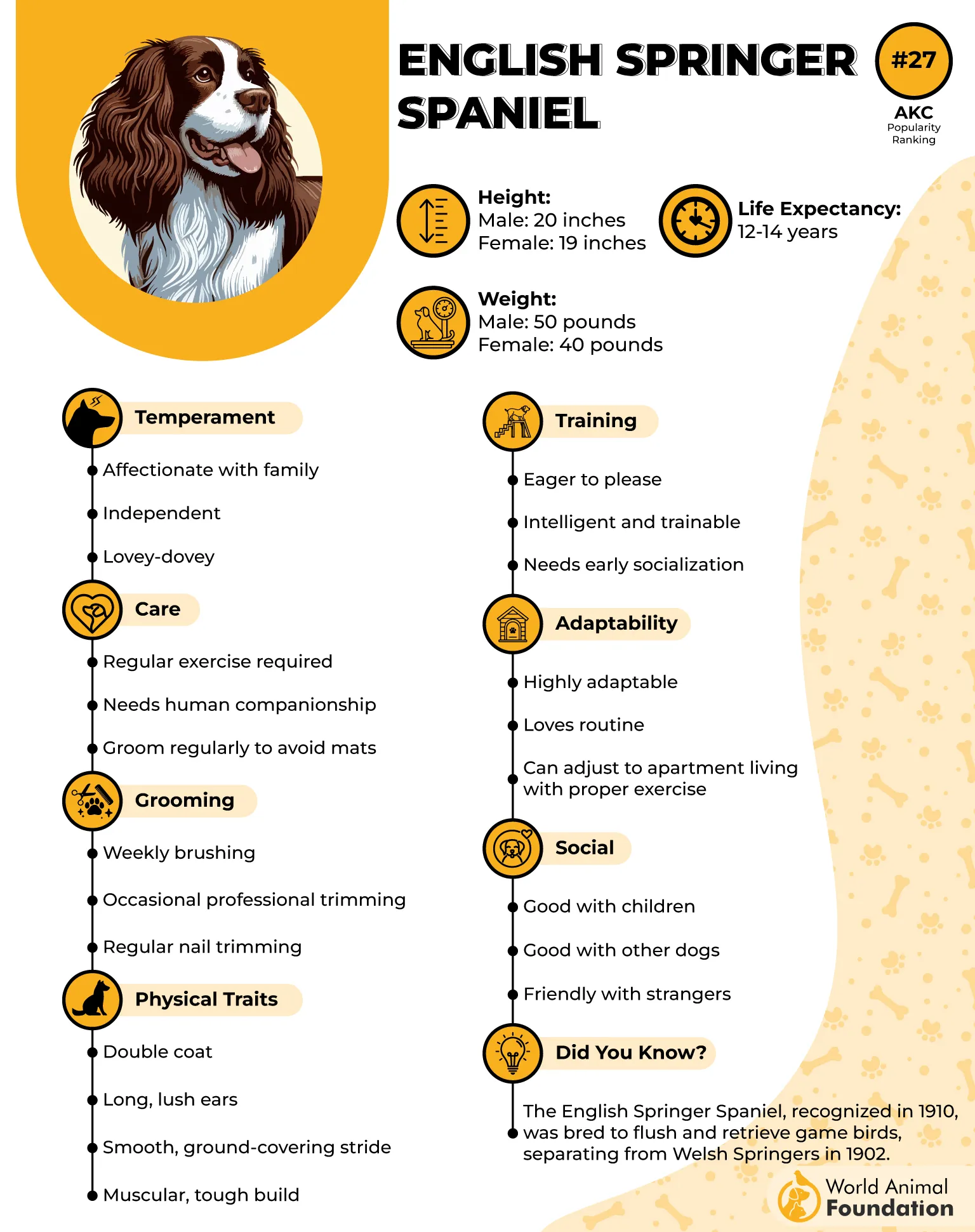
Exercise
Springers are bursting with energy and need consistent, active outlets to stay balanced and content. Long walks, vigorous games of fetch, swimming, and dog sports like scent work are ideal for keeping them mentally and physically stimulated.
A structured daily routine that includes purposeful play or tasks helps prevent boredom-related behavior and keeps this enthusiastic breed happy.
Fun Fact: The name “springer” comes from the breed’s historic job of “springing” birds into flight for hunters, an instinct that still energizes them today.
10. Shetland Sheepdog
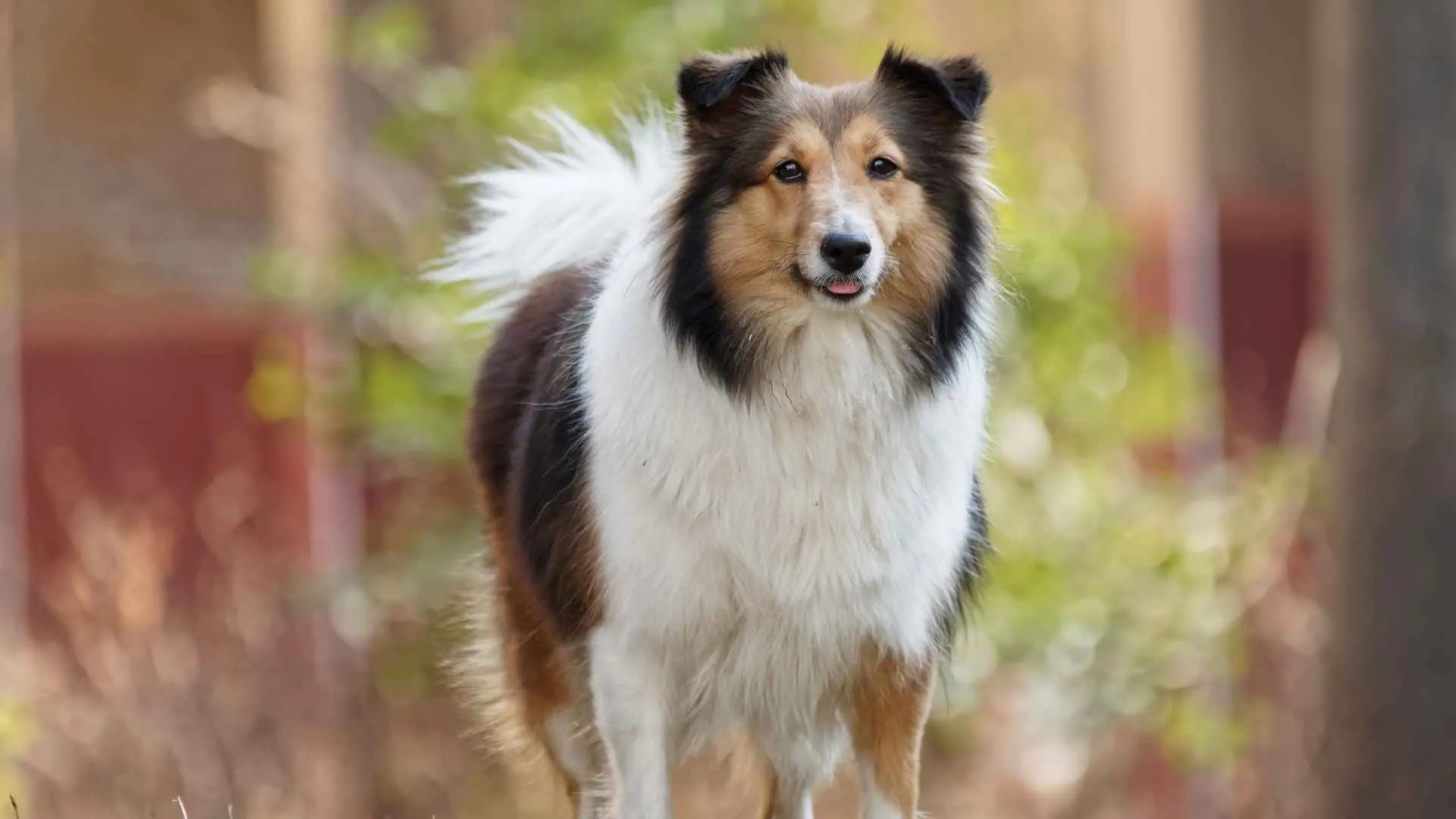
Shetland Sheepdogs, affectionately known as Shelties, are among the most trainable breeds thanks to their intelligence, loyalty, and eagerness to please. Originally developed to herd livestock, these medium-small dogs thrive on structure and routine, making them quick to pick up new commands and behaviors.
Their strong bond with family and love of learning make them a natural fit for obedience training and dog sports.
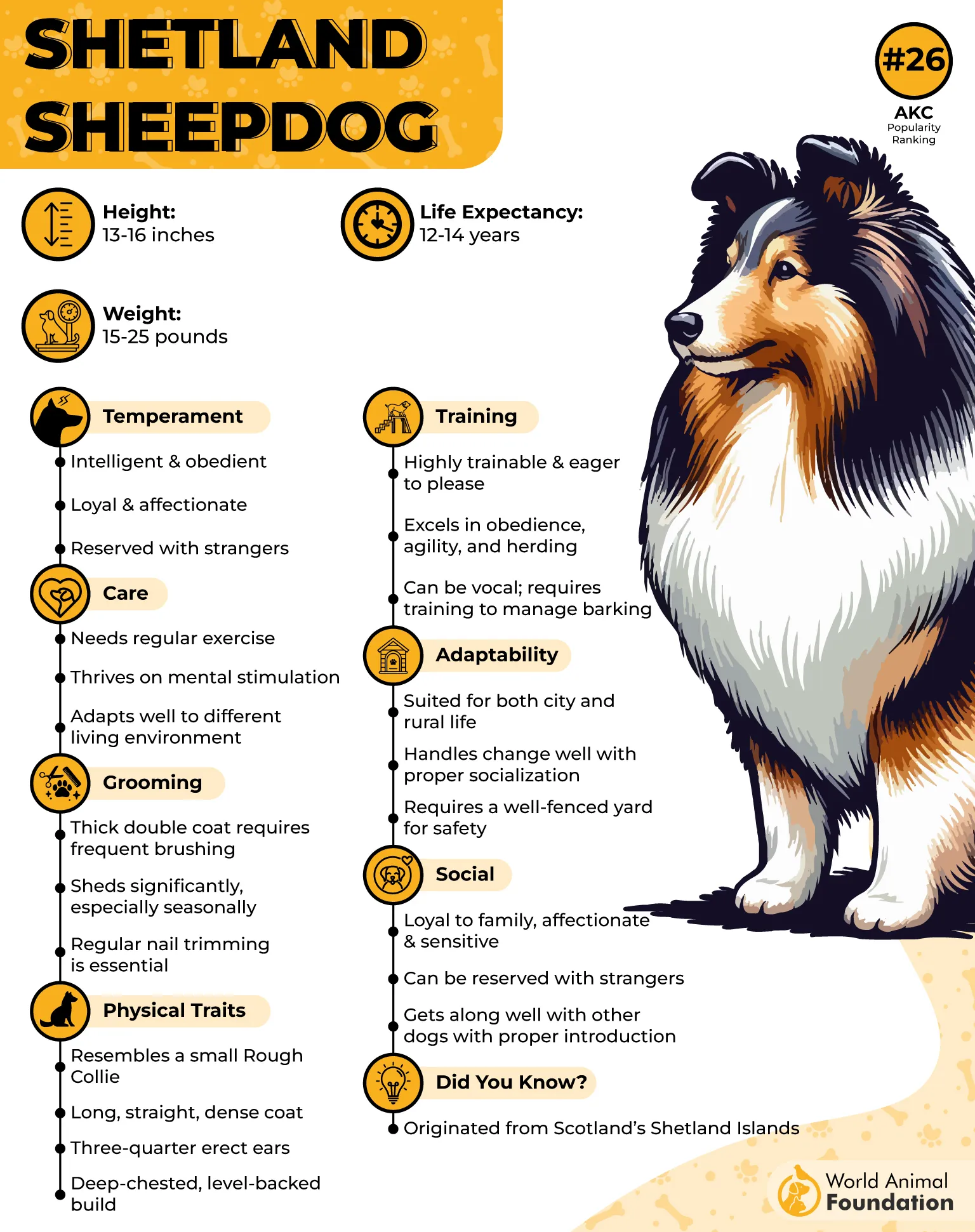
Exercise
Shelties are active dogs that need regular outlets for their energy to remain focused and well-mannered. Daily walks, playtime, and mentally stimulating activities such as trick training are excellent choices.
Their herding instincts also make them great candidates for structured games that mimic their original working purpose. Keeping them mentally engaged will not only make training smoother but also help curb barking and hyperactivity.
Fun Fact: These energetic dogs look like miniature Rough Collies and are known for excelling in competitive obedience and agility events thanks to their quick learning and spirited personalities.
Conclusion
Choosing the right companion begins with understanding how different breeds respond to learning. While many dogs have the potential to thrive with proper guidance, certain breeds naturally excel in following commands and picking up new skills quickly. From the enthusiastic Australian Shepherd to the sharp-minded German Shepherd, these dogs have proven their ability to shine in various dog sports and structured environments.
What sets a highly trainable dog apart often comes down to temperament, intelligence, and the desire to please. But even the smartest pup won’t succeed without consistent training methods and a supportive environment. Breeds like the Shetland Sheepdog and Papillon remind us that size doesn’t dictate learning potential, it’s the connection with their humans that makes all the difference.
Whether you’re seeking a partner for agility courses or simply want a well-mannered pet, understanding these characteristics can lead to successful dog training and a deeply rewarding relationship.


